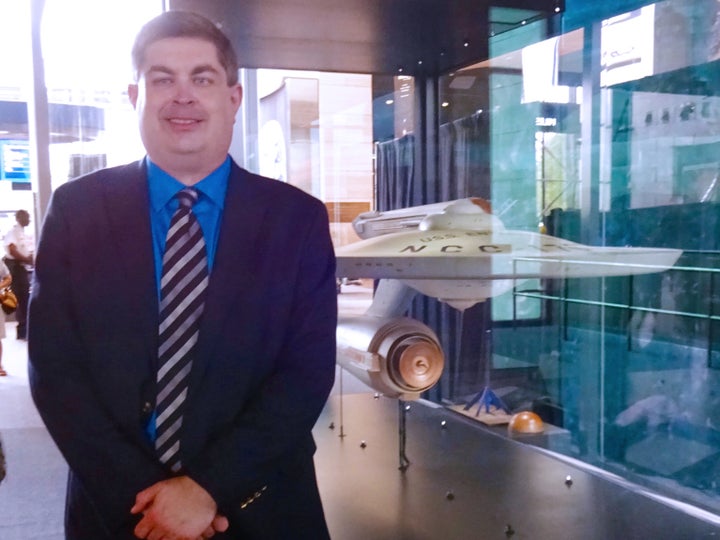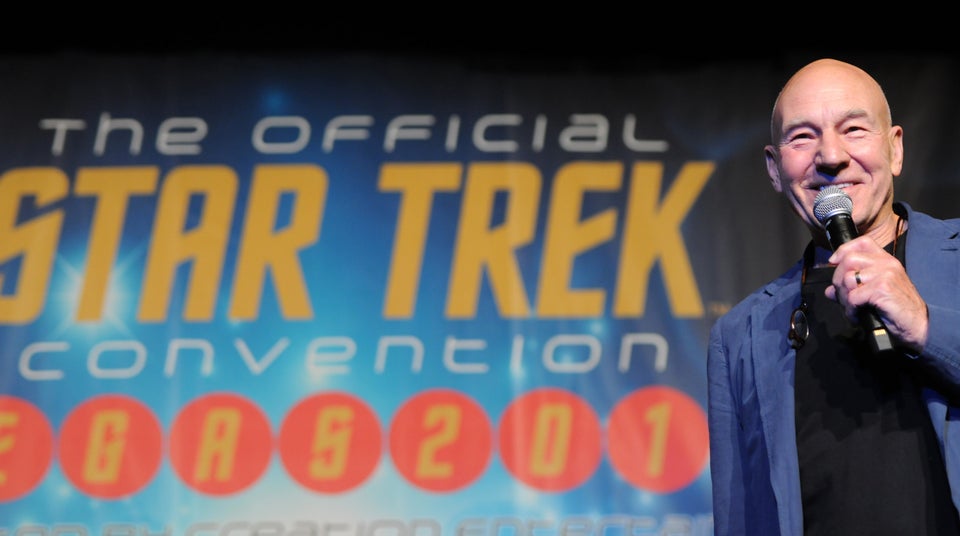
While I enjoy the Star Trek films that have been released since 2009, it was good to hear that the next TV series Star Trek: Discovery would be set in what is known to fans as the “prime” timeline. For those who do not know, the current movie series is set in an alternate timeline from all of the TV series that proceeded it. There is an interesting theory among some fans that in creating the alternate timeline the “prime” one no longer exists which would be problematic for Discovery. I believe, however, that there is significant precedent for timelines to coexist alongside each other in Star Trek.
In the 2009 Star Trek movie it is revealed that Ambassador Spock, of the crew of the original U.S.S. Enterprise, traveled back in time from 2387 taking his Romulan nemesis Nero with him. Nero, captain of the mining vessel Narada arrived in 2233 having sworn vengeance on the entire United Federation of Planets and destroyed the Federation’s U.S.S. Kelvin creating an alternate timeline. Upon Spock’s arrival 25 years later, Nero continues to further change the timeline by destroying Vulcan and attacking Earth before being defeated by the crew of what is a very different U.S.S. Enterprise. This suggests the adventures we followed on the original series and all that followed it, sans possibly Enterprise, never happened or certainly as we saw them. I include Enterprise because it features references to the events of Star Trek: First Contact in which the crew of the Enterprise-E go back in time to the mid 21st Century to stave off a Borg attempt to change history, something that would presumably be affected if their 24th Century timeline itself no longer exists.
The history of Star Trek is replete with stories where our heroes must “fix” the timeline once it has been altered so that it returns to the way things are supposed to be. The best known is perhaps the classic “The City on the Edge of Forever” in which Dr. McCoy accidentally travels back to 20th Century Earth changing history so that Germany wins World War II and there is no United Federation of Planets. Captain James T. Kirk and Mr. Spock have to follow and fix this damage. Upon their return history is restored and all is as they knew it suggesting that other timeline is simply gone.
Other stories, however, suggest things might not quite be this simple. In “Trials and Tribble-ations” the crew of the 24th Century U.S.S. Defiant follows a disgruntled Klingon agent determined to assassinate Captain Kirk back to the 23rd Century. Of course they prevent his treachery and return to their own familiar timeline. For the first time though there are cracks in everything being exactly the same, due in part simply to production necessities and a plot that intelligently recognizes the incongruity of things going perfectly back to normal like nothing different happened at all.
Using footage from the original series “The Trouble With Tribbles”, the 24th Century Defiant crew interact with the 23rd Century Enterprise crew. They are present at some very notable historical moments including an epic bar fight on Space Station K-7 between Enterprise crew-members and Klingons, and some Defiant crew, including Chief Miles Edward O’Brien, end up replacing Enterprise crew members when being interrogated by Captain Kirk about the brawl. The original series episode features the original scenes while Deep Space Nine features the new scenes suggesting both timelines coexist.
While this could easily be chalked up to not tinkering with a classic episode of the original series even when there was a chance to re-edit it for re-release, the story actually introduces a perfect explanation. Defiant Captain Benjamin Sisko, upon his return to the 24th Century and his post aboard Deep Space Nine, is subject to a review by Temporal Investigations. Their job is to identify changes to the timeline (although exactly what they do with such information is unclear), and upon being informed that Captain Kirk was involved the investigators call him a “menace” with “seventeen separate temporal violations”. By this time the Federation is clearly sophisticated enough to recognize alternate timelines are being created, something they would expand on in the 29th Century as seen on Star Trek: Voyager and the 31st Century as seen on Star Trek: Enterprise with a wide-ranging “Temporal Cold War” where factions actually fought to create alternate timelines.
The strongest argument for co-existing timelines though is found in The Next Generation episode “Parallels”. In this episode, Lt. Worf finds himself accidentally moving from one parallel universe to another. In each case subtle and sometimes not so subtle differences exist based on outcomes of previous events being different. In the end at least 285,000 versions of the U.S.S. Enterprise-D are brought together in a successful effort to get Worf back to his timeline.
Finally, because Discovery is set 10 years before the original series, placing it around 2255, it exists in a timeline that in any case still exists at least as an echo. If the “prime” timeline did in fact come to an end in 2387 what came before would still exist as a past reality (albeit presumably inaccessible from the outside). The Ambassador Spock that arrived from the future in 2258 had to come from somewhere, as did a photograph of him with the crew of the original Enterprise from 2287 that was passed along to the new timeline’s younger Spock upon Spock Prime’s death in 2263 as seen in Star Trek Beyond. There was much we never saw of that timeline, giving Star Trek: Discovery ample room to further explore the deep history of Star Trek no differently than watching an episode of Star Trek on Netflix is not invalid because of a timeline change.

